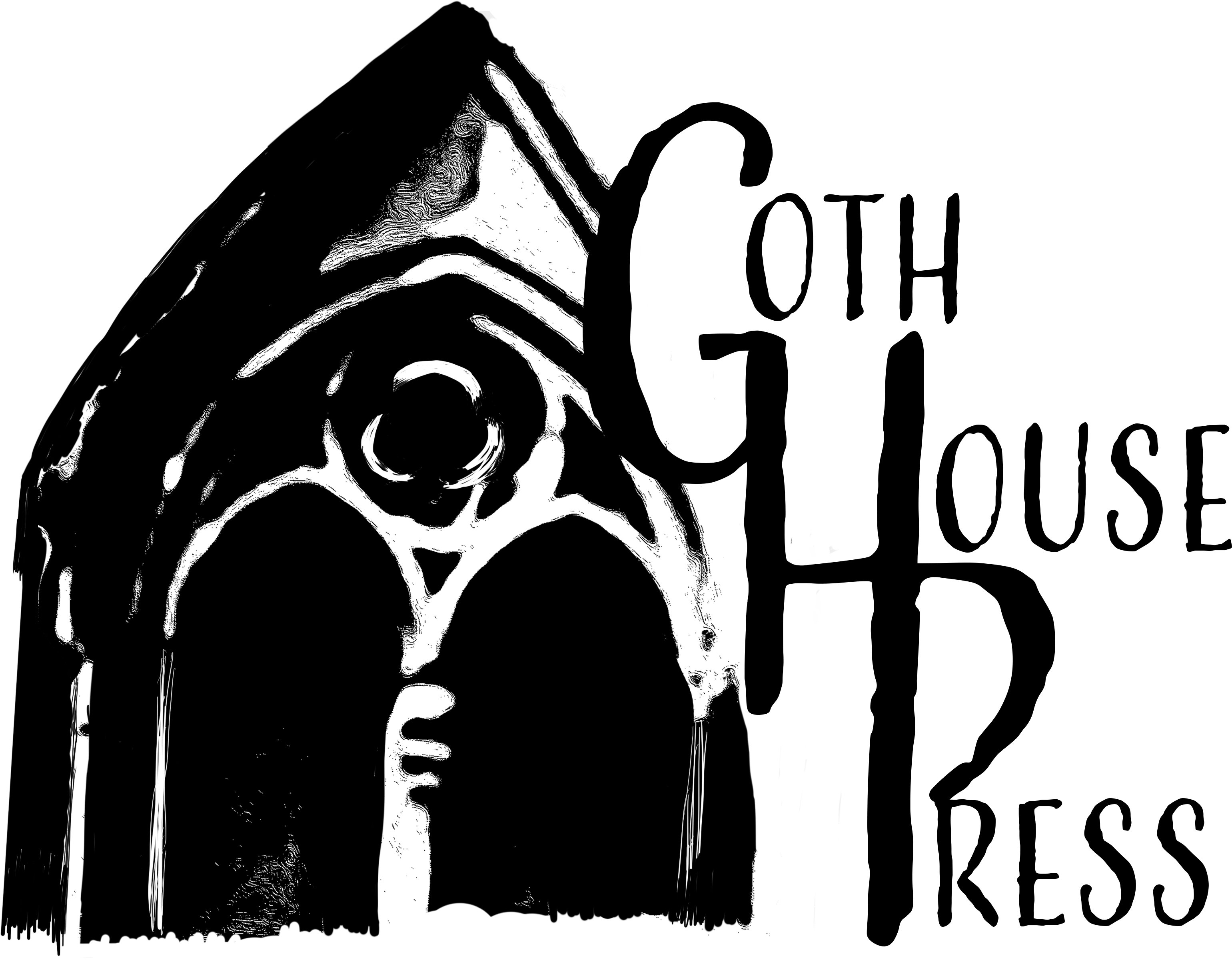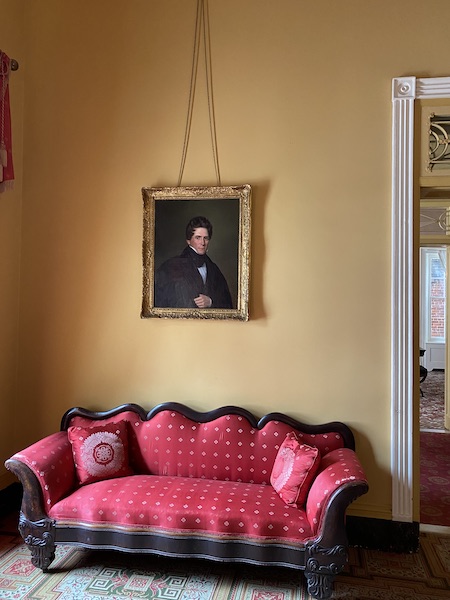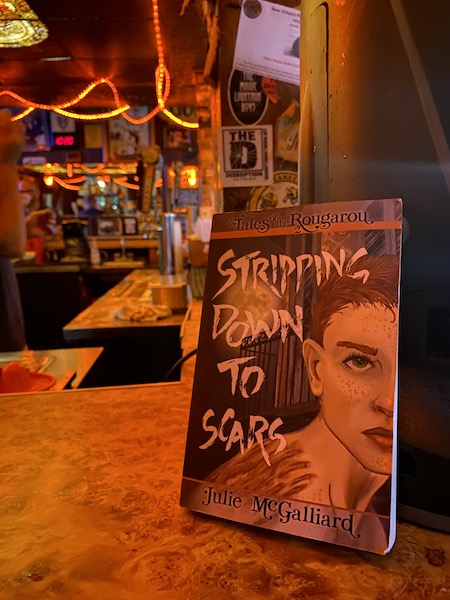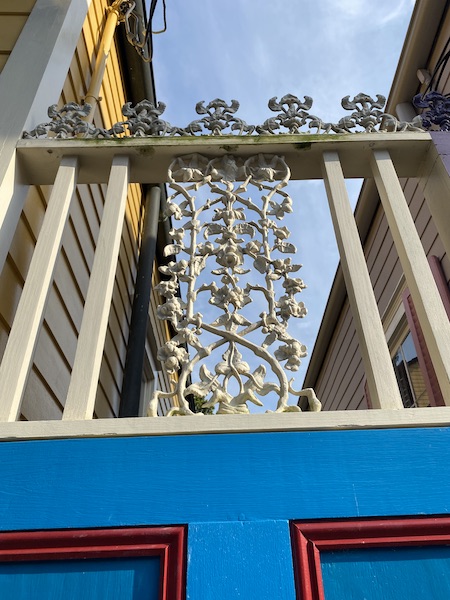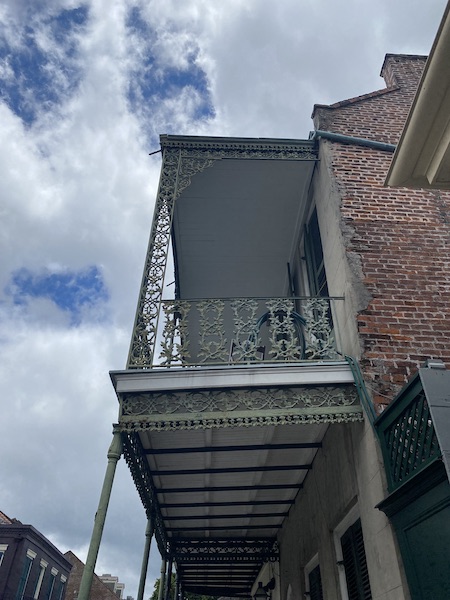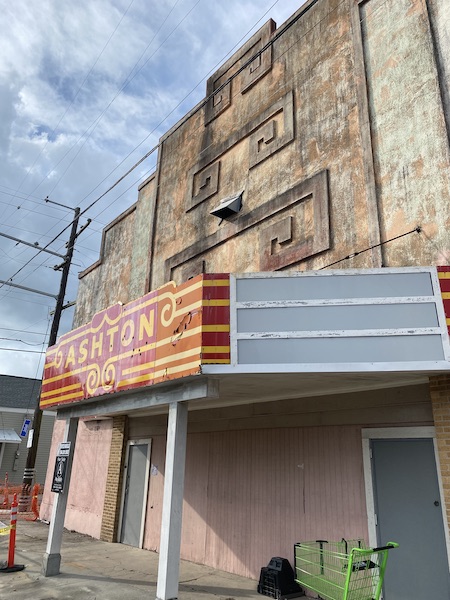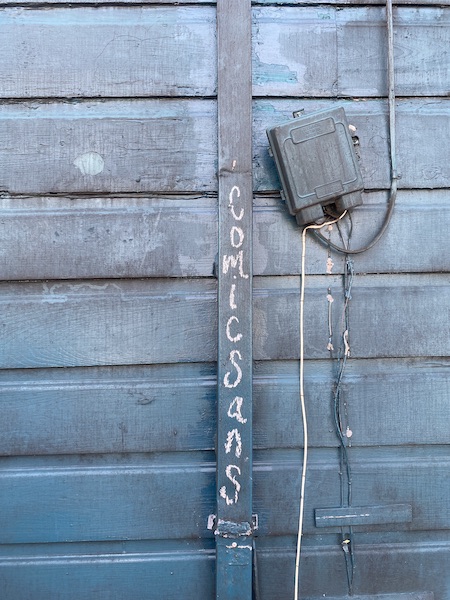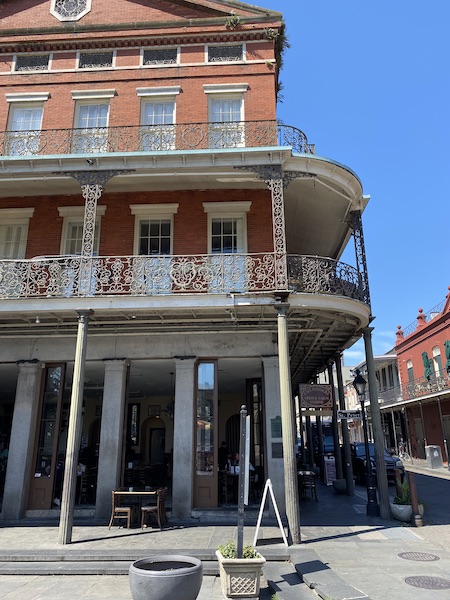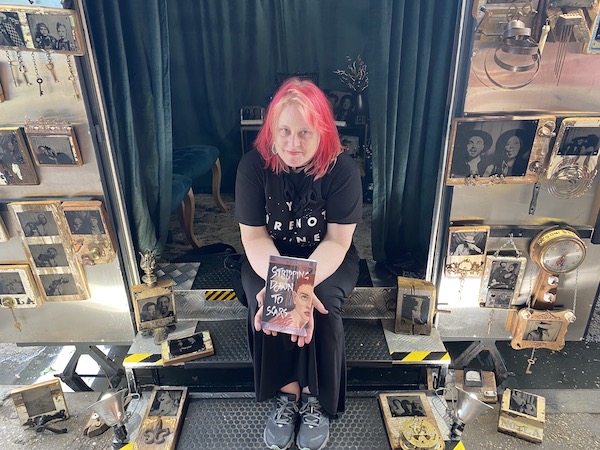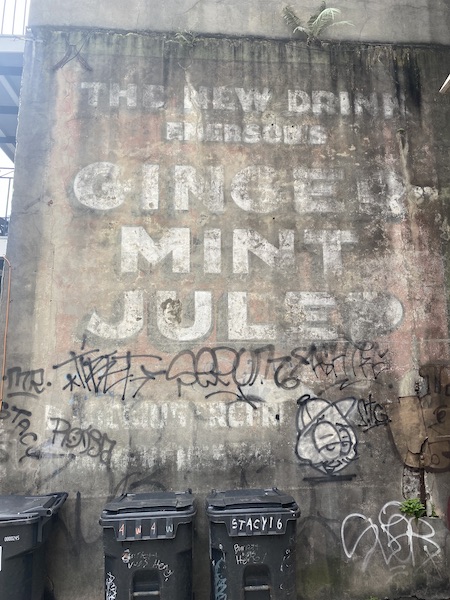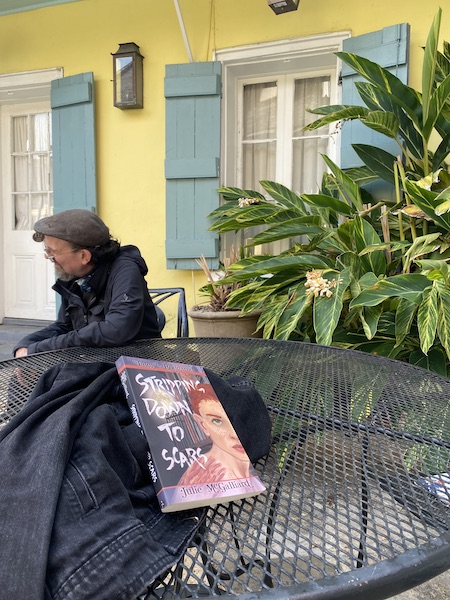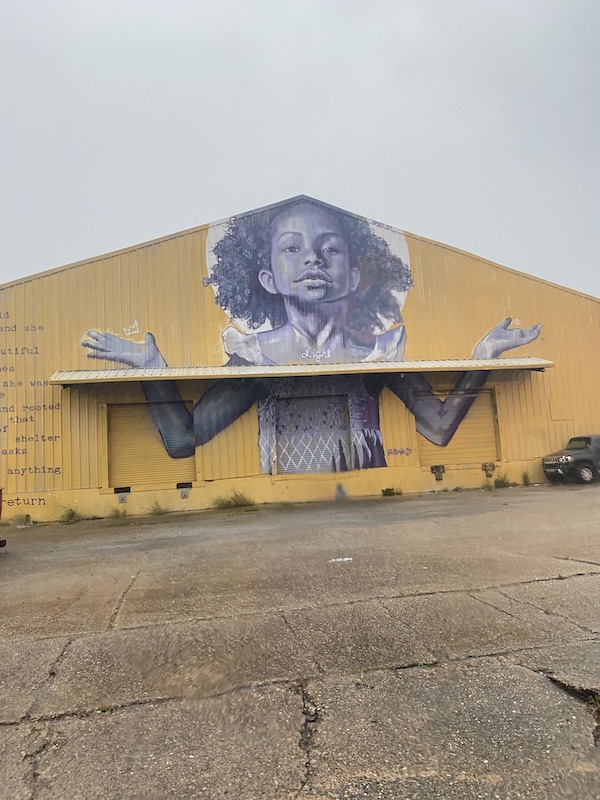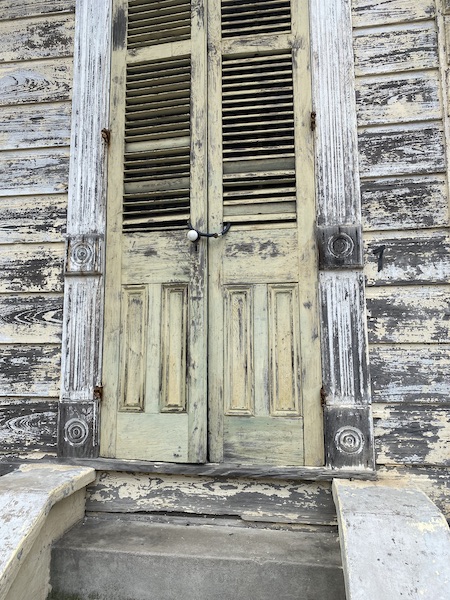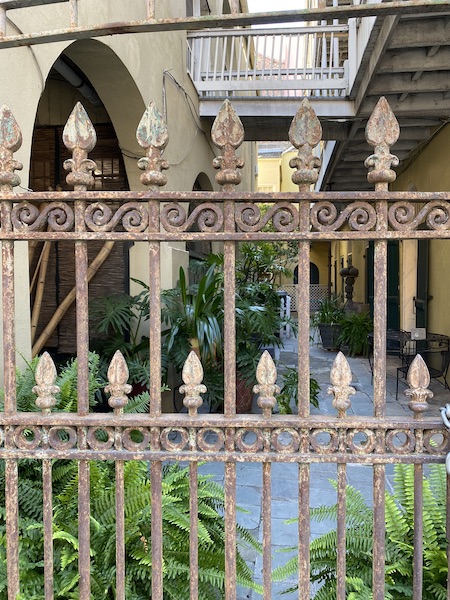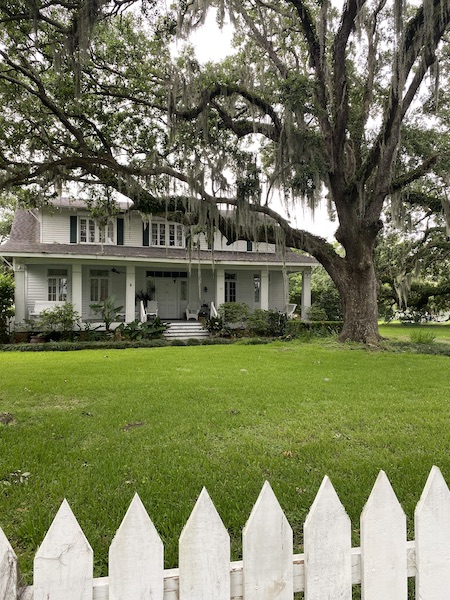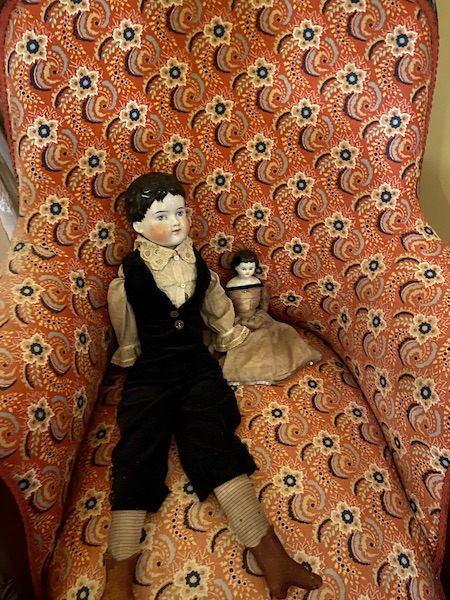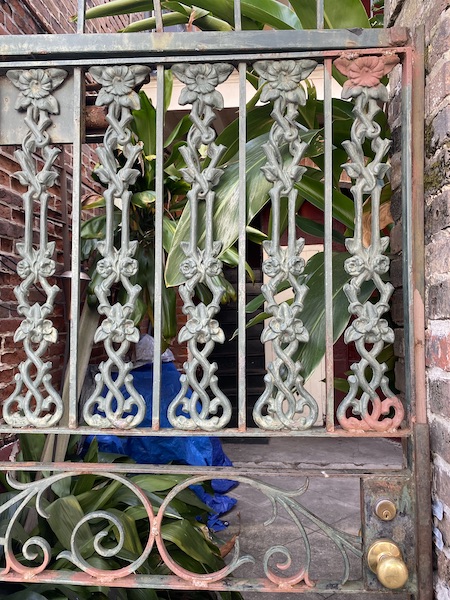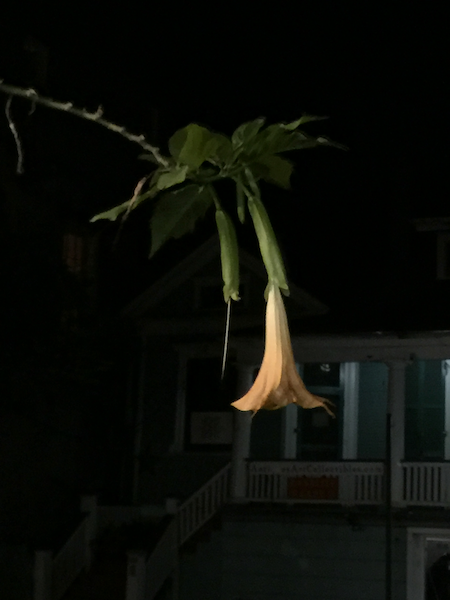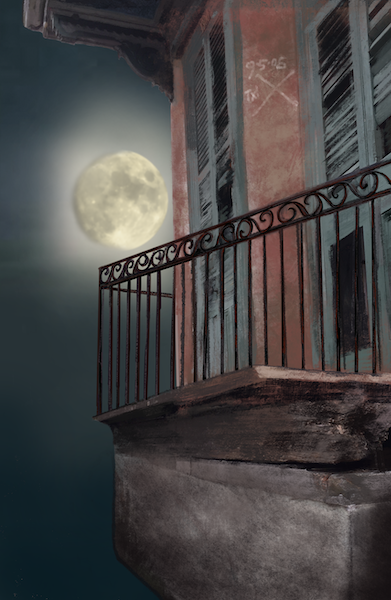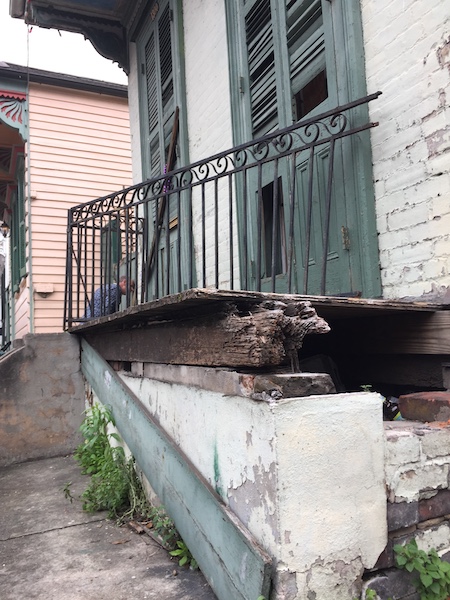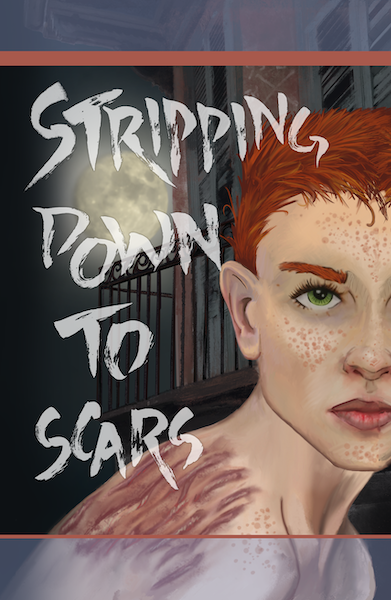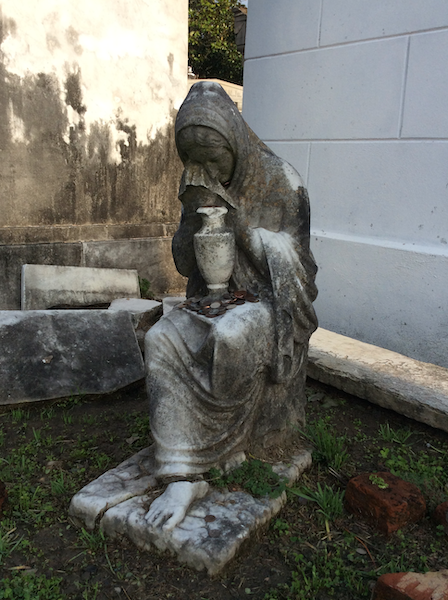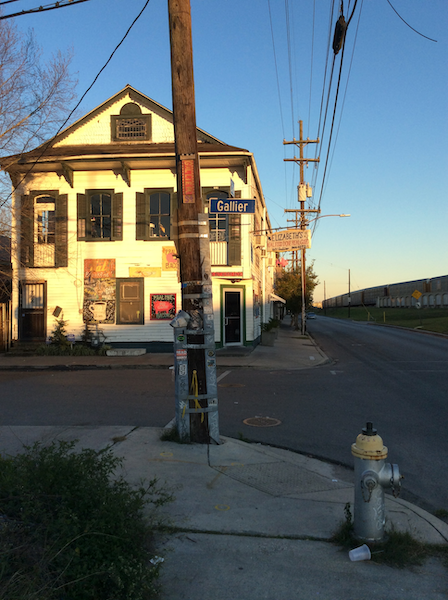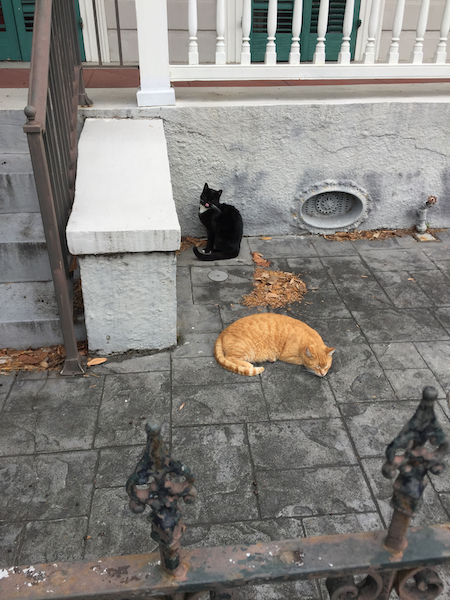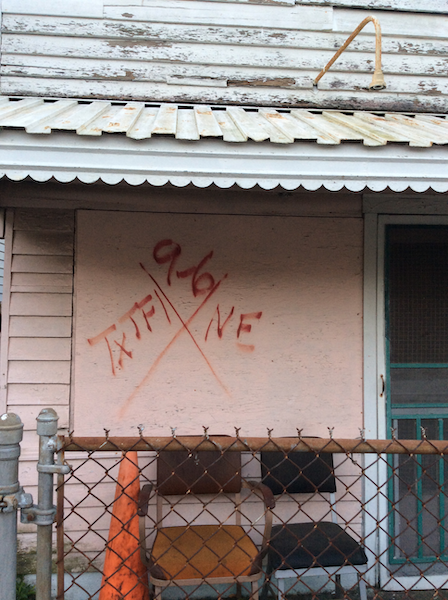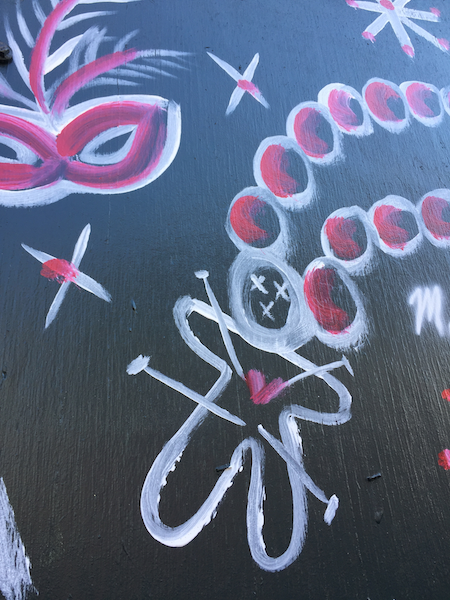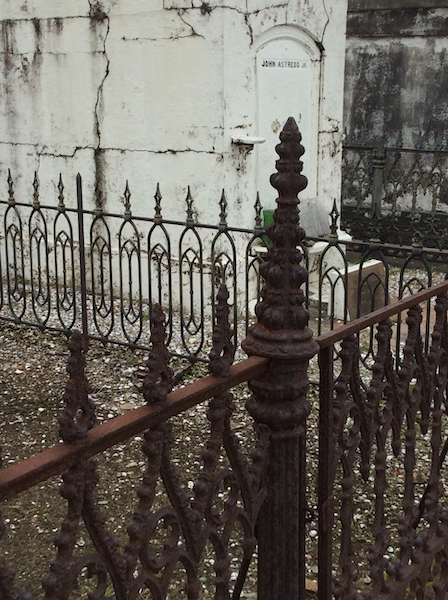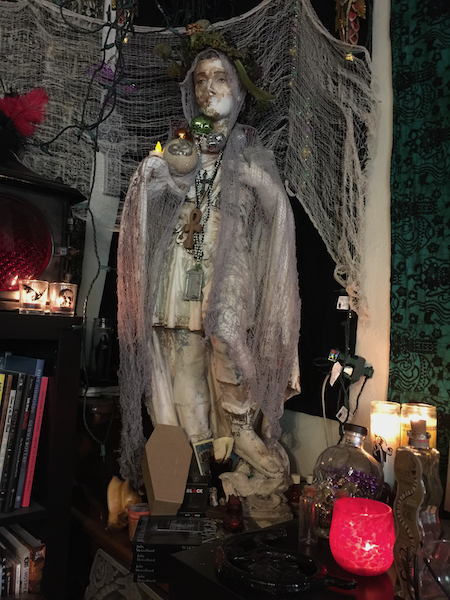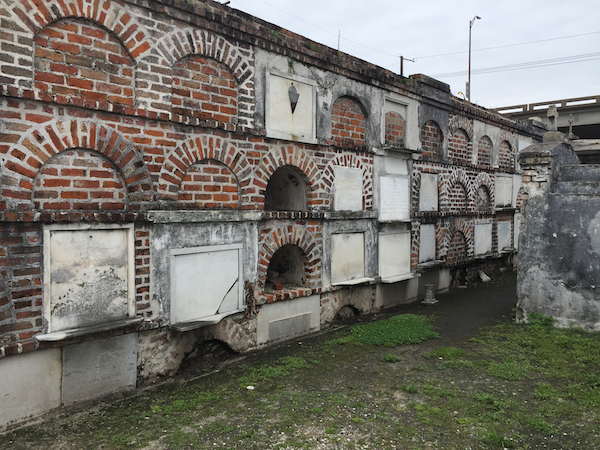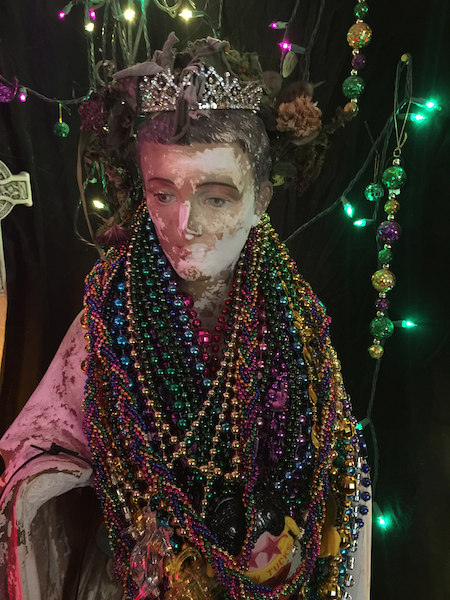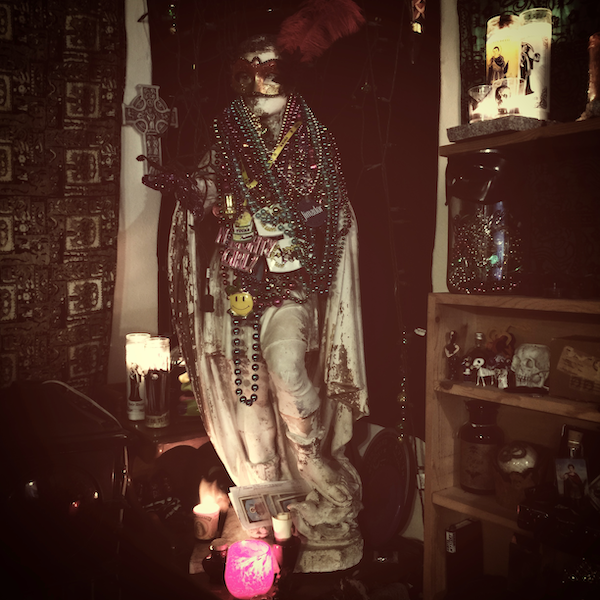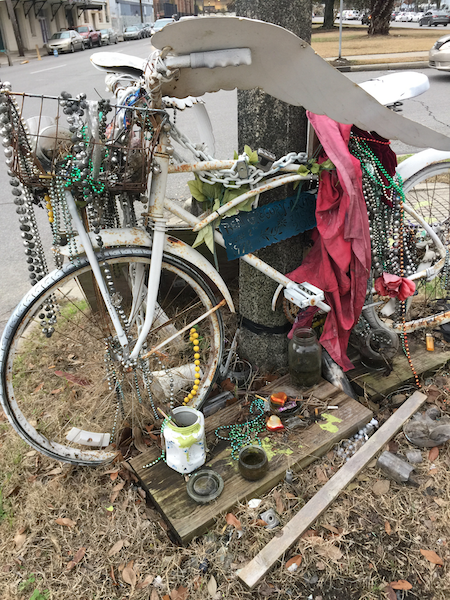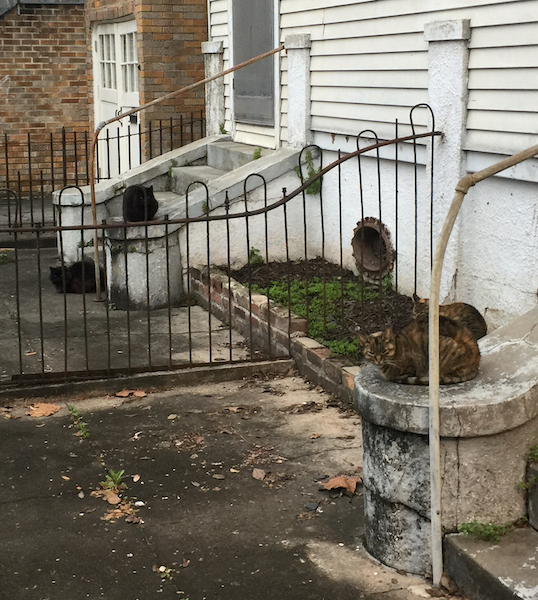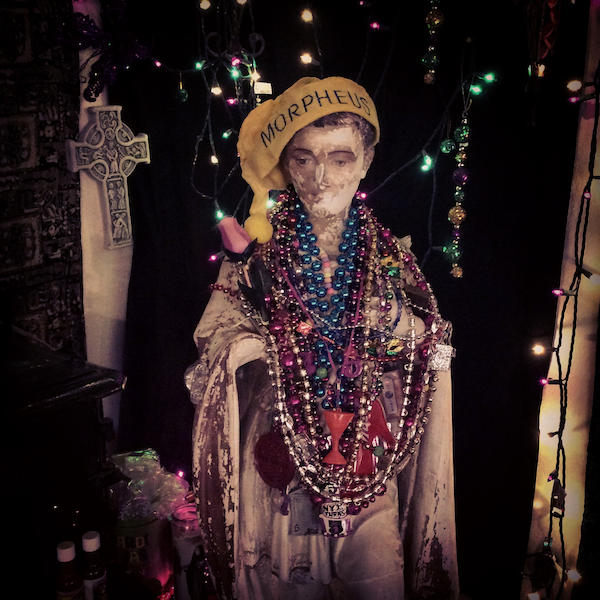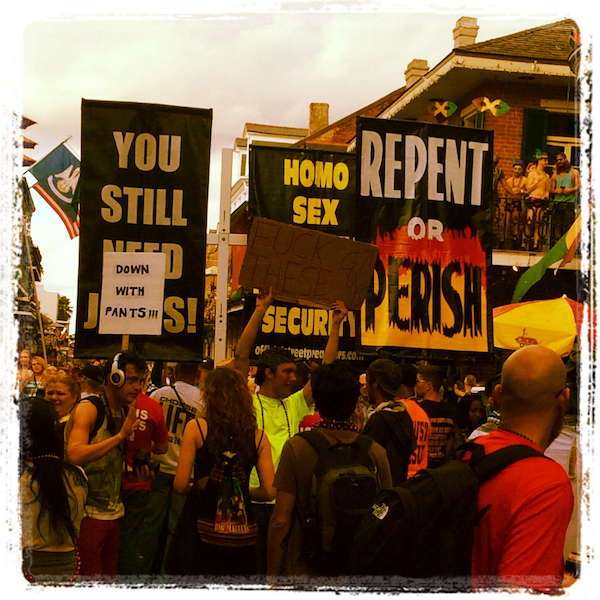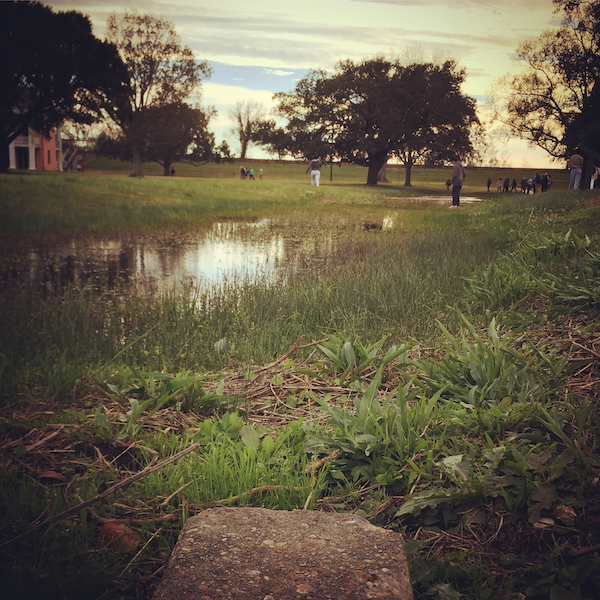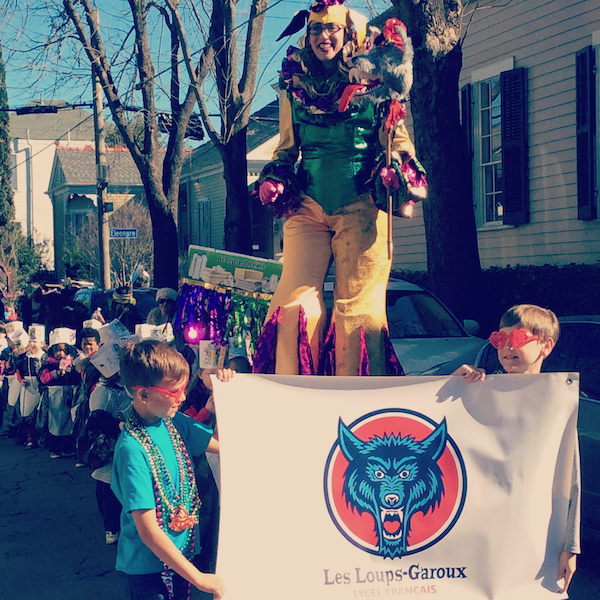April 6 2023 Update: I’m still using the same batch of cards for Norwescon 2023, so if you get that QR link, here is the link to Julie McGalliard Norwescon 2023/Norwescon 45 schedule.
Hey everybody!
If you’re on this page, it probably means you got here from the QR code link on the cards I made for Mardi Gras 2022, or it means we’re already connected on social media. The picture below are the ones I used for the the variant side of the cards, with a brief explanation of where the image comes from and why it’s here.
Except for the pictures of Saint Expedite (Pacific) all images were taken in and around New Orleans, from the years 2014 – 2021.
Interior from the Hermann-Grima house. The location (820 St. Louis Street) and general layout of the French Quarter maison in the Rougarou series is based on this house. It’s one of those historic houses that just feels intensely haunted and I think this picture captures that.
I’ve been on the tour twice and it was very different both times. In 2019 it was Creole Mourning Customs and in June 2021 it was closer to the Urban Enslavement in New Orleans Tour. Highly recommended if you’ve never been.
According to my phone camera this was taken at the corner of Toulouse (too-loose) and Burgundy (bur-GUN-dy) which probably means I was at Fahy’s Irish Pub. Taken in June 2021. I was trying this thing I’d seen other writers doing where you take pictures of your book in various locations? I don’t know, most of them didn’t really turn out but I liked the colors here. Fahy’s Irish Pub has what might be the last working pay phone in North America — not working as a pay phone, as such, but as the bar phone.
French Quarter, June 2021. I had decided on the cover design for Book 4 and was trying to figure out how to draw the famous New Orleans ironwork. So in 2021 I was going around taking pictures specifically of the ironwork. Every time I saw a design that I didn’t think I’d seen before, I would take a picture of it.
June 2021, abandoned theater in a neighborhood called “Leonidas” on the map but more generally known as the “Carrollton-Riverbend” part of town. Corner of Apple and Joliet. There’s a theater mentioned in Book 4, picture this one.
June 2021, Bywater neighborhood. It says “Comic Sans.” It is not written in Comic Sans. Why is it there? I have no idea. Embrace the mystery that is New Orleans.
June 2021, one of the famous Pontalba buildings. Micaela Almonester, Baroness de Pontalba, designed the ironwork herself. She was quite an interesting person based on what we learned during our Bad Bitches Ghost Tour. I’ve been on, like, a zillion New Orleans ghost tours and the Bad Bitches was one of the most fun, highly recommended.
June 2021, ghost sign in the French Quarter, Decatur Street. I will always take a picture of a good ghost sign.
June 2021, another “books in the wild” photo, this one taken in the courtyard of the historic Hotel St. Pierre. It’s our most frequent New Orleans hotel, probably because of proximity to the piano bar at Jean Lafitte’s Blacksmith Shop.
I think this was taken in Bywater but I can’t seem to find it in my photos app, so I’m not sure when or exactly where.
Montegut, 2021. Montegut is a teeny-tiny little town south of Houma as you head into the gulf. It’s always been my physical model for where Bayou Galene, the secret werewolf town, is located. The live oak and big white house became the cover models for Book 4.
Background cover art for Book 2. Based on a 2019 photo I took of a ruined house at the corner of Barrack and Chartres, French Quarter. The original photo:
At first I thought I could just photoshop out that guy you see in the background and otherwise use the photo, but I discovered quickly that a photographic background does not combine with an illustrated foreground, so I ended up doing a digitally painted version of the whole thing. For digital art I use a mixture of Photoshop and Procreate with an Apple pencil.
Book 2, Stripping Down to Scars cover art, without the “Tales of the Rougarou” and “Julie McGalliard” text that goes on the actual final cover.
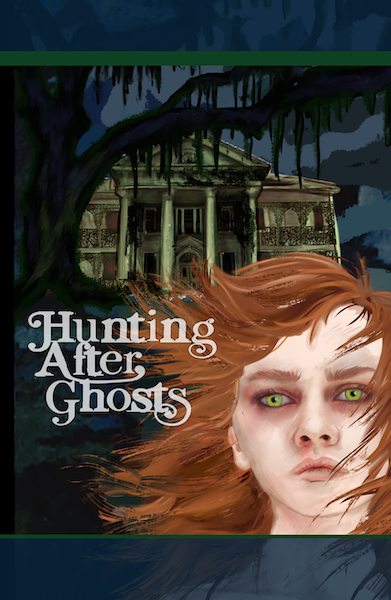
Book 4, Hunting After Ghosts, alternate lettering cover design. All the Rougarou books are pretty gothic, but Book 4 is deliberately A gothic. I wanted the cover to reflect that, so I spent a lot of time looking at the covers of 1970s gothics for inspiration. I considered using the swash lettering (used for “Tales of the Rougarou” and “Julie McGalliard” on the final covers) instead of the usual dry brush lettering for the title portion. This is not quite the final cover design, as I had to rush it a bit to get the cards in time for Mardi Gras. You might notice that Abby doesn’t have any freckles. I always add her freckles last.
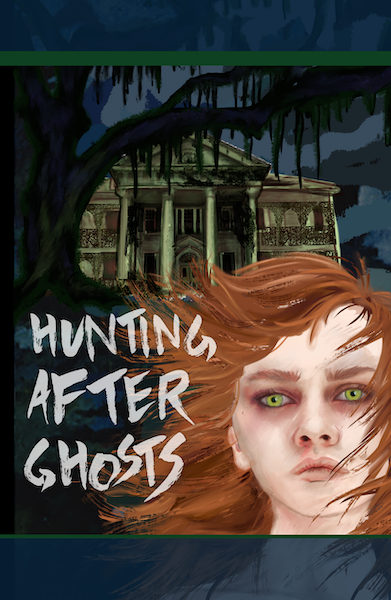
Book 4, Hunting After Ghosts, alternate lettering cover design. This was done quickly so I could compare the swash letters to the dry brush letters, so it’s made by piecing together letters already done for covers 1-3. For lettering nerds, the final brush letters are always done by hand using a Pentel brush pen I got at Uwajimaya in Seattle. Usually I have to draw each word a few times to get it right — to get the right look I have to make each stroke with a big, almost casual gesture, which means the strokes sometimes go terribly, terribly wrong.
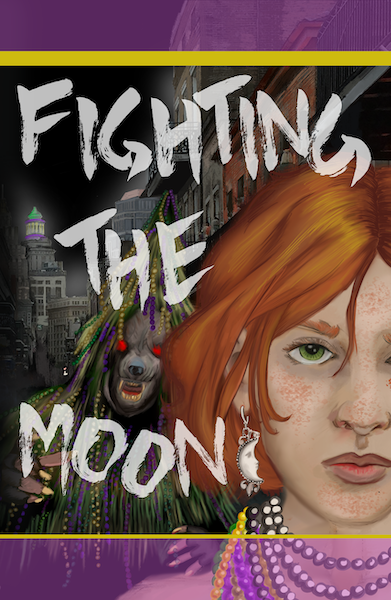
Book 3, Fighting the Moon, final cover. The New Orleans street view is looking down Bourbon Street toward the Central Business District. It’s a composite of several different pictures I took of that view, and like the ruined house for Book 2, the photos were a starting point and the actual artwork is entirely drawn in Photoshop and Procreate. The rougarou figure behind her is based on a combination of the design for Cajun Mardi Gras costumes and costumes for the Rougarou Fest in Houma.
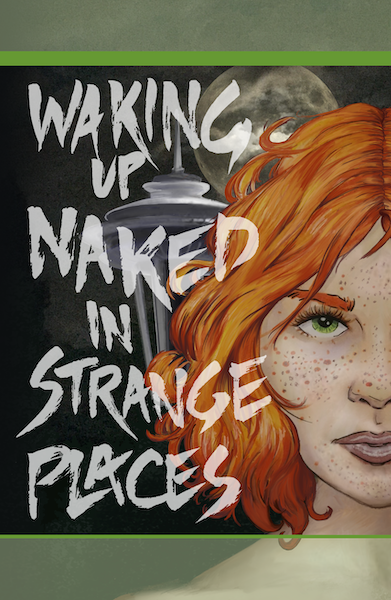
Book 1, Waking Up Naked in Strange Places, final cover. The picture of Abby was drawn by illustrator Cory Skerry based on me describing what I wanted her to look like and him apparently able to read my mind. The Abby pictures for Book 2 and Book 3 still use this basic artwork. The picture of the Space Needle is a redraw of my own photo, and the moon is stock art that I actually paid money for.
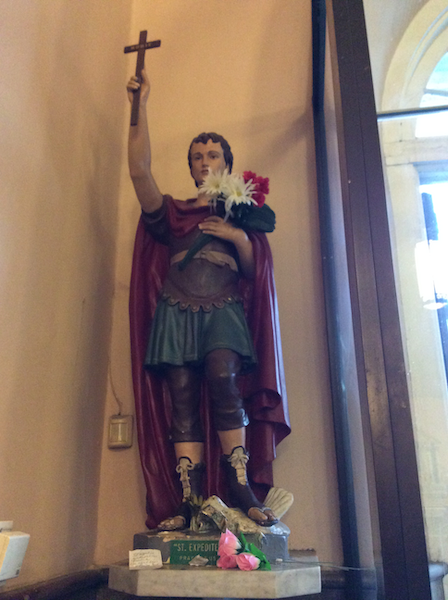
Saint Expedite, Our Lady of Quadalupe, New Orleans. I have so many photos of Expedite I don’t want to bother trying to figure out exactly when I took this one.
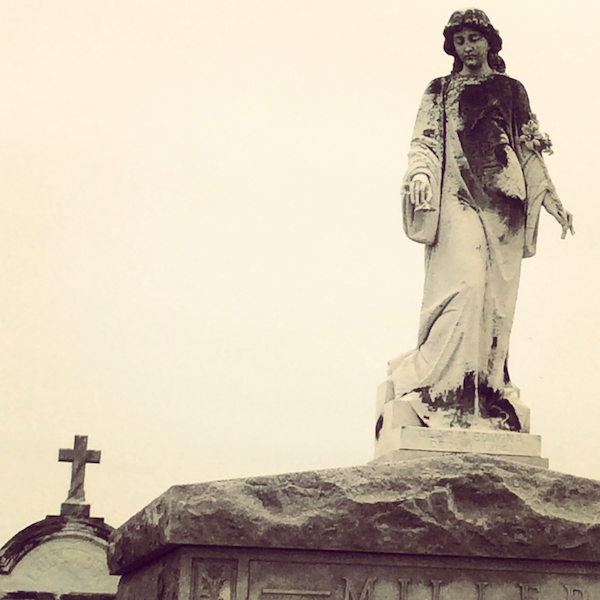
I think this was taken in St. Louis No. 1 but I have so many New Orleans cemetery photos. Soooooo many.
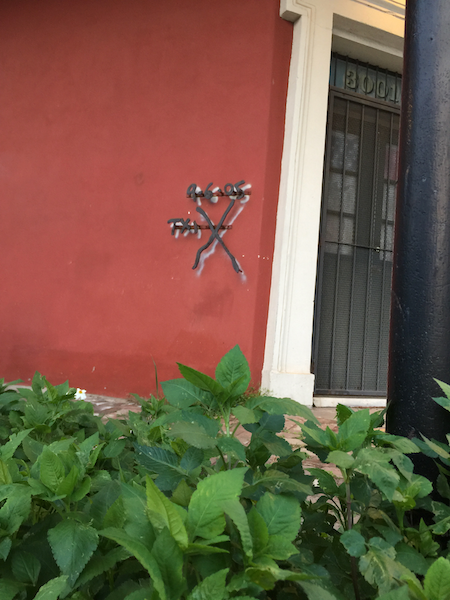
Chartres (Charters) and Montegut, Bywater. A brass (I think??) representation of the spray-painted FEMA cross left during the aftermath of Hurricane Katrina. I always think I’m going to knock on their door and ask them about it, and I always chicken out.
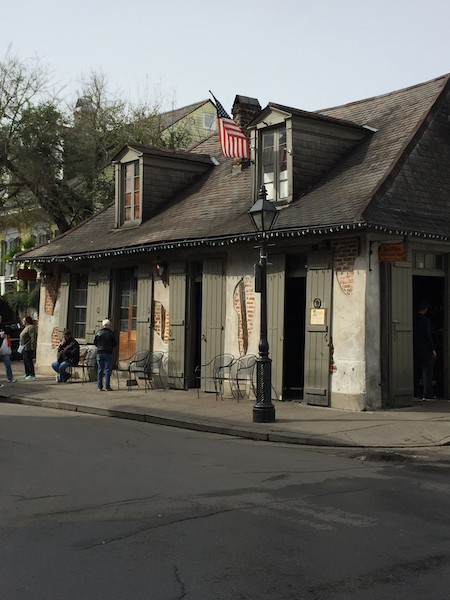
Jean Lafitte’s Blacksmith Shop, extremely iconic New Orleans building. At one time this was the darkest bar I had ever been to, but they’ve added a bunch of lights since then. They still have the piano bar, though. They sometimes call themselves “the oldest bar in North America” but technically they’re just the oldest building in use as a bar (built c. 1722).
Their location is Bourbon Street and St. Philip. When we first started going to New Orleans, that part of the Quarter heading toward Esplanade always seemed really dark and spooky, but the crowds have shifted that direction, I think it’s because of the popularity of Frenchmen Street as a night spot, which really seemed to take off post-Katrina.
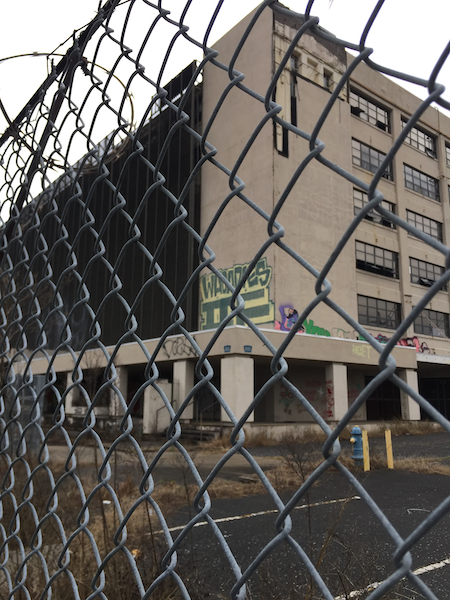
Abandoned Navy Facility, Chartres and Poland. In Book 2 this is the location where Abby finds the second body.
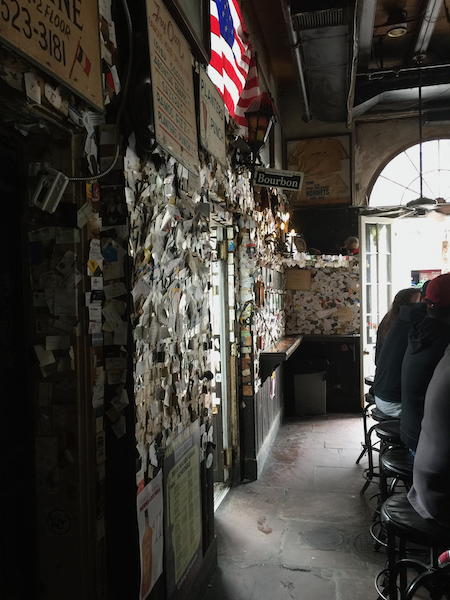
Old Absinthe House. I think it was 2019? The first couple of times I went here, you couldn’t get any absinthe, since it was illegal in the US at that time. It was legal again in 2007, thanks to the hard work of alcohol chemists who proved their absinthe to be thujone-free. March 5 is National Absinthe Day.Fun fact: New Orleans has a liqueur, Herbsaint, designed as an absinthe substitute in cocktails such as the Sazerac. The Sazerac is the official cocktail of New Orleans, and I am a certified “sazeractivist” which means I attended a training seminar in how to make a proper Sazerac, then took a vow in front of the New Orleans Culinary and Cultural Preservation Society that if anybody ever asked me “where do I get a Hurricane?” I would show them where to get a Sazerac instead.This is a joke, nobody ever asks where to get a Hurricane. But if they did ask, I probably violate my vows to would tell them, “The best Hurricanes are at Jean Lafitte’s Blacksmith Shop and no matter what you do, do NOT get a third. Or a fourth. Absolutely, under no circumstances whatsoever, should you EVER get a fourth Hurricane from Jean Lafitte’s Blacksmith Shop. Or a fifth? No, definitely a fourth. Stop at three. Wait, no, stop at two.”The Hurricane started life as a Tiki drink, and like a lot of Tiki drinks, has gotten a bad reputation as a monster of cloyingly sweet alcoholosity suitable only for getting first year college students drunk. But if you make them right, they’re really good, and suitable for getting thirtyish cocktail snobs hammered.
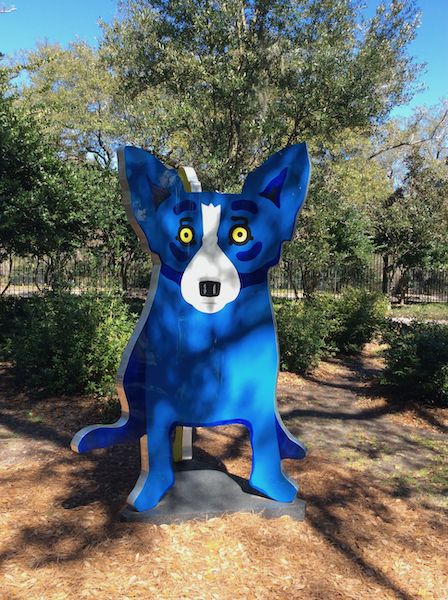
Rodrigue’s Blue Dog, City Park sculpture garden. The Blue Dog is a rougarou and looks quite spooky in some of his earliest appearances.
